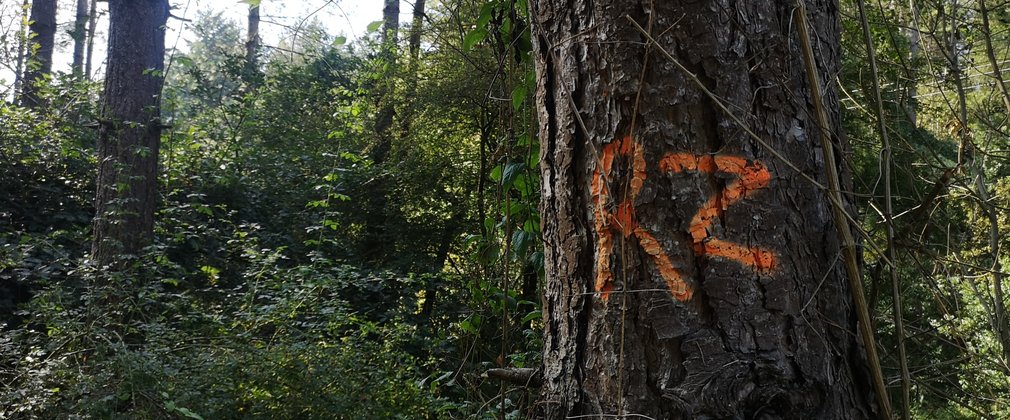Canonteign Forest is a working woodland producing sustainable timber. Read on to find out more about the work that's happening.
What is happening?
In some areas of the forest where trees are growing densely, we have thinned them. This means removing selected trees to give the remaining ones more space to grow to their potential. Thinning also allows more light to reach the forest floor, which improves the habitat for ground flora and the wildlife it supports.
We have finished most of the planned timber harvesting but timber is still waiting to be transported. Once all the work is complete, we will repair the forest roads and tracks.
Caring for ancient woodland
Some of the work areas are classified as ancient semi-natural woodland. These areas would have developed naturally hundreds of years ago. People have managed them for wood products and other industries for centuries, and we continue to look after them to protect their special characteristics. Other areas are classified as Plantations on Ancient Woodland Site (PAWS). These are areas of ancient woodland that have been planted over with non-native trees. We are gradually managing them back to the way they would have been several hundred years ago, including encouraging native tree species to regenerate.
In other areas where the trees are mature, we have clear felled them and remove them all at once. We will let the ground rest for a couple of years before we plant new trees. We always plant several trees for each one that we remove. In the meantime, the ground will become scrubby and provide great habitat for birds, small mammals, reptiles, and invertebrates.
Sustainable and renewable
The timber from Canonteign Forest is certified by the Forest Stewardship Council® (FSC®) and the Programme for the Endorsement of Forest Certification (PEFC) as being sustainably produced.
Can I still visit Canonteign Forest?
Safety is our highest priority. Canonteign Forest is open to visitors while the felled timber is collected from site. Be aware that heavy machinery is still working on site. It is essential for the safety of our visitors, staff, contractors, and volunteers that everyone follows all signs, diversions, and closures at all times, whether or not you can see or hear us working.
What about the wildlife?
Harvesting trees is an important part of sustainable forest management and well managed forests support more wildlife. Before we start any forestry work, we carry out thorough ecological surveys to check for species such as birds, mammals, rodents, invertebrates, flora, and fungi. This enables us to identify ecological constraints such as the presence of European Protected Species and Schedule 1 protected birds, which affect the time of year when certain operations can be carried out. For instance, part of Canonteign Forest has so much ecological potential that we are managing it as a natural reserve to protect its flora and fauna.
We consider our findings against complex factors including tree health, how the ground slopes, soil condition, and likely rainfall when planning forestry work. While working, we continue to check for wildlife and adapt, pause, or suspend work if necessary.
Where can I find out more?
You can read about our management plans for Canonteign Forest in our forest plan. If you have any questions about our work at Canonteign, please contact us.

